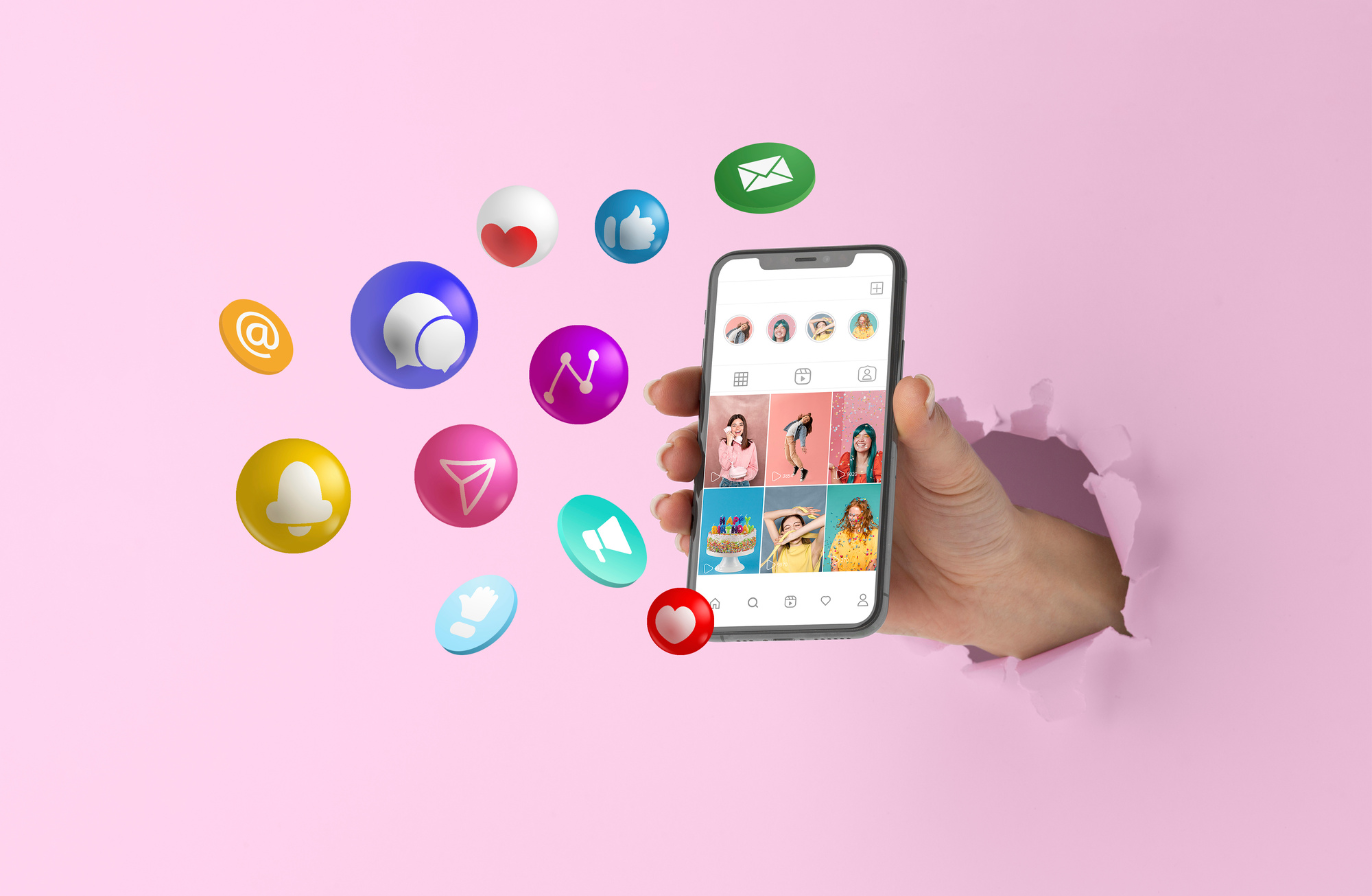The Role of Social Media Experiments for Getting Strategic Optimization Insights
Learn how to plan, run, and analyze a social media experiment to test content, boost engagement, and understand your audience better.


You’re putting in the work. But is it working?
A smart social media experiment helps you stop wondering and start knowing.
Luckily, in this A to Z guide, I’ll show you how to test your social media marketing strategies and turn data into direction.
Let’s dive in.
Key takeaways
-
Test with purpose: Every experiment should start with a clear goal and hypothesis. Without direction, you’re just posting and hoping.
-
Content insights are hidden in the details: The same content can perform differently across formats, platforms, and audiences. Micro-insights often reveal macro wins.
-
Data is only valuable when it leads to action: Metrics mean nothing if they don’t shape your strategy. Use results to refine, scale, and make smarter moves.
One of the biggest social media marketing challenges today is knowing what actually drives results—and what’s just noise.
Algorithms shift, trends fade, and audience behavior isn’t always predictable.
That’s where using social media to test ideas becomes a game-changer.
With controlled experiments, you can isolate what works, ditch what doesn’t, and make smarter decisions based on real data, not assumptions.
It’s also the most effective way to improve your social media KPIs, from engagement rates to conversion metrics.
Ultimately, this approach reveals the true impact of social media on businesses—and gives you the clarity to scale with confidence.
Why are social media experiments beneficial for brands?
When you’re new in a role—or newly responsible for social analytics—there’s this strange mix of excitement and quiet panic. People expect clarity from you before you even know where half the spreadsheets live. And the first time a VP casually asks, “Is this performing better than last quarter?”, you feel the urgency to get your arms around everything, fast.
Experiments give you that grip.
They let you turn the mess of assumptions, inherited dashboards, and half-baked reports into something you can actually defend. They help you move from “I think…” to “Here’s what we tested, here’s what happened, and here’s the plan.”
Experiments become your rescue rope. Not because they make you a genius, but because they let you create proof. Proof that you’ve brought leadership something they didn’t have before. Proof that you understand the audience better than the tools that came before you. Proof that you’re not just posting—you’re steering.
And honestly? There’s nothing like handing someone a clean insight that didn’t exist the week before. It’s a small, quiet flex. The kind that gets remembered.
How to create a social media experiment workflow
Before diving into running experiments on social media, it’s important to lay a solid foundation.
Proper planning ensures that your ideas testing are focused, measurable, and aligned with your overall social media content strategy.
That’s why, before starting social media data collection, you need to:
Formulate a hypothesis
This part feels intimidating until you realize you’re already doing it in your head every day:
- “Posts with real faces do better than product shots.”
- “TikTok comments spike when we use humor.”
- “LinkedIn reach jumps when the CEO stops sounding like ChatGPT.”
A hypothesis is just writing down the hunch you’re already betting your strategy on.
Here are some common mistakes to avoid:
- Vague/ overly broad hypotheses: avoid hypotheses that are too general or lack specificity.
A hypothesis like “video content performs better” is too vague. Instead, be specific, such as “video content featuring customer reviews drives 20% more engagement than static posts.”
- Not linking hypotheses to business objectives: ensure that your hypotheses are tied directly to your business goals.
Whether it’s increasing brand awareness, improving conversion rates, or boosting engagement, your hypotheses should support these objectives.
For example, testing a hypothesis like “a 15-second video increases TikTok engagement by 25%” directly aligns with engagement goals.
Come up with a concept
This is where the creativity sneaks in.
You’re not reinventing the whole calendar. You’re choosing one tiny thing to test that could make you look instantly competent if it works. Maybe you test two versions of the same story: heartfelt vs. polished. Or a Reel with a person talking vs. text overlay. Or a LinkedIn post written like an essay vs. one written like a human who’s had a long day.
The concept doesn’t need bells and whistles. It just needs to be clear enough that when leadership asks what you tested, you don’t freeze.
Execute
People often underestimate how much confidence comes from hitting “publish” on your own terms—even if it’s a tiny test. But this is where your planning turns into action.
To truly understand what works, your execution needs to be both structured and creative.
One standout example comes from yours truly, the Socialinsider team. We handed over our Instagram Stories to different teammates for 24 hours, with zero rules or approvals.

The result? A crash course in what it means to be a social media manager, and a flood of raw, real content that revealed how audiences respond to different styles.
Beyond fun, experiments like these are a form of social media market research in action.
By testing formats, tone, and engagement strategies firsthand, you’re gathering real-world data that informs future decisions.
Just remember: execution should follow the framework you’ve built. Keep your variables focused, your timeline clear, and your goals measurable.
Monitor impact within an established frequency
The trick isn’t watching numbers nonstop; it’s knowing when the numbers matter.
Some platforms show results in hours. Others in days. LinkedIn, mysteriously, sometimes decides to bless a post eight days later for no reason at all.
Pick a cadence and stick with it. That rhythm becomes the difference between “I think this is working?” and “Here’s the pattern.”
Analyze results and draw insights
This is where the magic happens—not because the graphs are beautiful (although… yes), but because you finally understand why something worked.
Maybe the post with a real team photo hit because people crave authenticity. Maybe the carousel flopped because it felt like homework. Maybe the TikTok with the messy lighting did shockingly well because it looked like an actual human made it.
Insights aren’t academic. They’re personal. They’re the moment you go from newcomer to “the person who actually knows what’s going on.”
Great execution means nothing without proper social media analysis. But when you take the time to evaluate performance, you’re investing in clarity.

Take the post shown above: it racked up over 2.5K engagements and a 22% average engagement rate, making it one of the top-performing content pieces we’ve had.
But high numbers alone don’t tell the whole story. So I asked myself why it worked.
Was it the relatable chaos of being a social media manager for a day? The unfiltered tone? The creative format?
When you analyze results through the lens of both metrics and meaning, you unlock patterns that guide smarter decisions.
That’s where social media optimization comes in.
Use what you’ve learned to double down on what resonates, refine what doesn’t, and build on winning elements.
The goal isn’t just to repeat success—it’s to scale it.
So remember: this step isn’t just a formality. It’s one of the best social media practices because it turns data into direction.
Iterate
This stage feels like leveling up.
You make a tweak. Then another. You chase a pattern. You sharpen your instincts. Everything gets a little cleaner, a little more intentional.
Iteration is the quiet part of leadership—where you show you’re not just getting lucky. You’re building a system that grows with you.
How to select the proper KPIs for effective evaluation of social media experiments
To measure success, focusing on the right social media metrics ensures that you’re tracking the factors that directly impact your goals.
Without the right KPIs, you risk wasting resources on irrelevant data that doesn’t provide actionable insights, making it harder to optimize your strategy effectively.
Different platforms require different approaches, so consider the following:
- Platform-specific KPIs: metrics can vary from one platform to another.
For instance, on TikTok, video views, shares, and engagement rates are critical, while LinkedIn focuses more on impressions and click-through rates for content targeting professionals.
Make sure the metrics you track align with each platform’s strengths and your experiment’s purpose.
Picking KPIs gets way easier when you stop treating them like a science exam and start treating them like a story you’re trying to tell.
Awareness metrics tell people, “Yes, we’re showing up.”
Consideration metrics say, “People actually care.”
Loyalty metrics whisper, “They keep coming back. Something’s working.”
Let’s keep it that simple.
For awareness
You’re trying to answer: Did people even notice us? What you’re looking for: spikes that prove that content performed better than usual.
This is crucial because visibility is often the first thing leadership fixates on.
The metrics that matter most here:
- Reach
- Impressions
- Video views
- Profile visits
- Share rate (surprisingly powerful—people don’t share things they don’t see or care about)
- Completion rate on videos
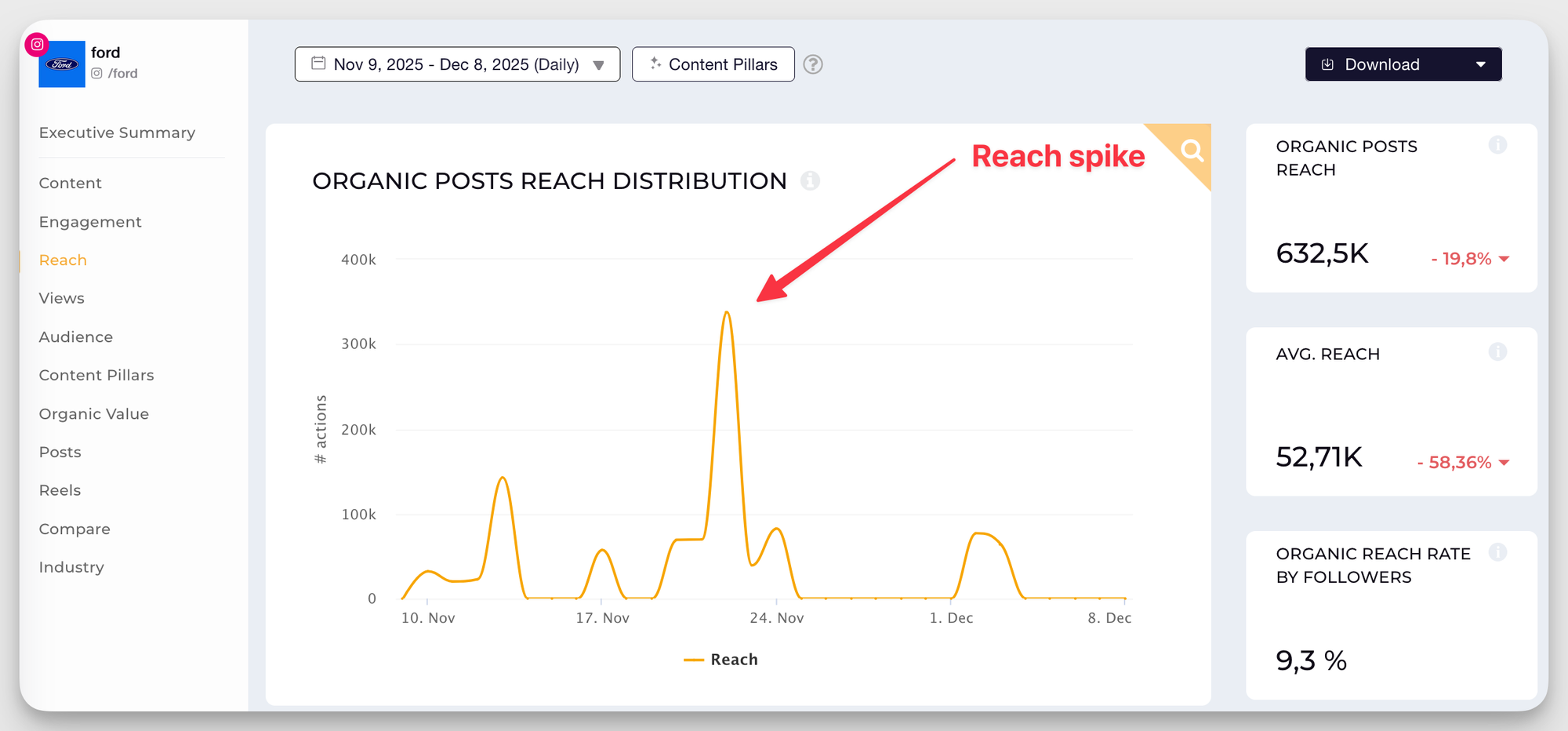
For consideration
This is the moment someone goes from “I saw it” to “Okay, tell me more.”
The metrics:
- Engagement rate
- Saves (quietly the strongest signal of “this mattered”)
- Clicks
- Comments that show thought, not emojis
- Shares that aren’t just reactive
These numbers give you the kind of insight you can confidently take into a meeting and actually feel proud presenting.
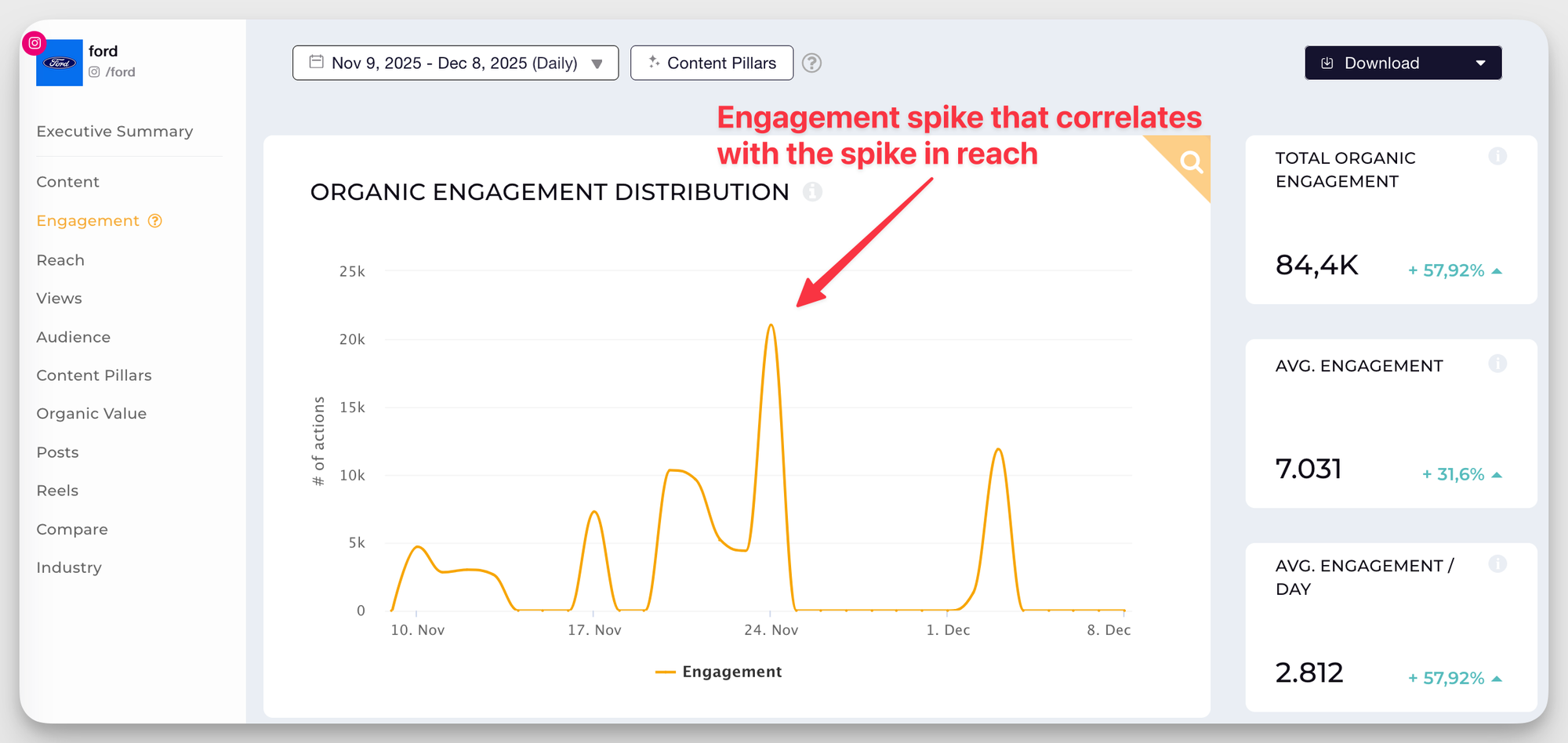
For loyalty
Now you’re proving staying power. You’re showing that what you’re building isn’t a fluke—it’s a relationship.
Look at:
- Commenters who show up again and again
- Returning viewers on video platforms
- Follower growth that feels healthy, not… suspicious
- Long-form discussions, DMs, people referencing previous posts
- Organic mentions
These signals say, “We didn’t just land. We stayed.” Longevity is one of the strongest indicators that your work is resonating.
What types of social media experiments should you try?
Based on your social media goals, testing typically falls into two main categories: content format and audience targeting.
Each of these testing types provides unique social media insights that help optimize your content strategy, ensuring you’re reaching the right people with the right message.
Content format experiments
Obviously, different content formats perform differently.
Experimenting with different social media content types helps you understand what engages your audience the most.
Some types of experiments to run on social media include:
- Video vs. image vs. Carousel vs. text Posts
According to our Instagram benchmarks study, carousels are currently leading in engagement rates.
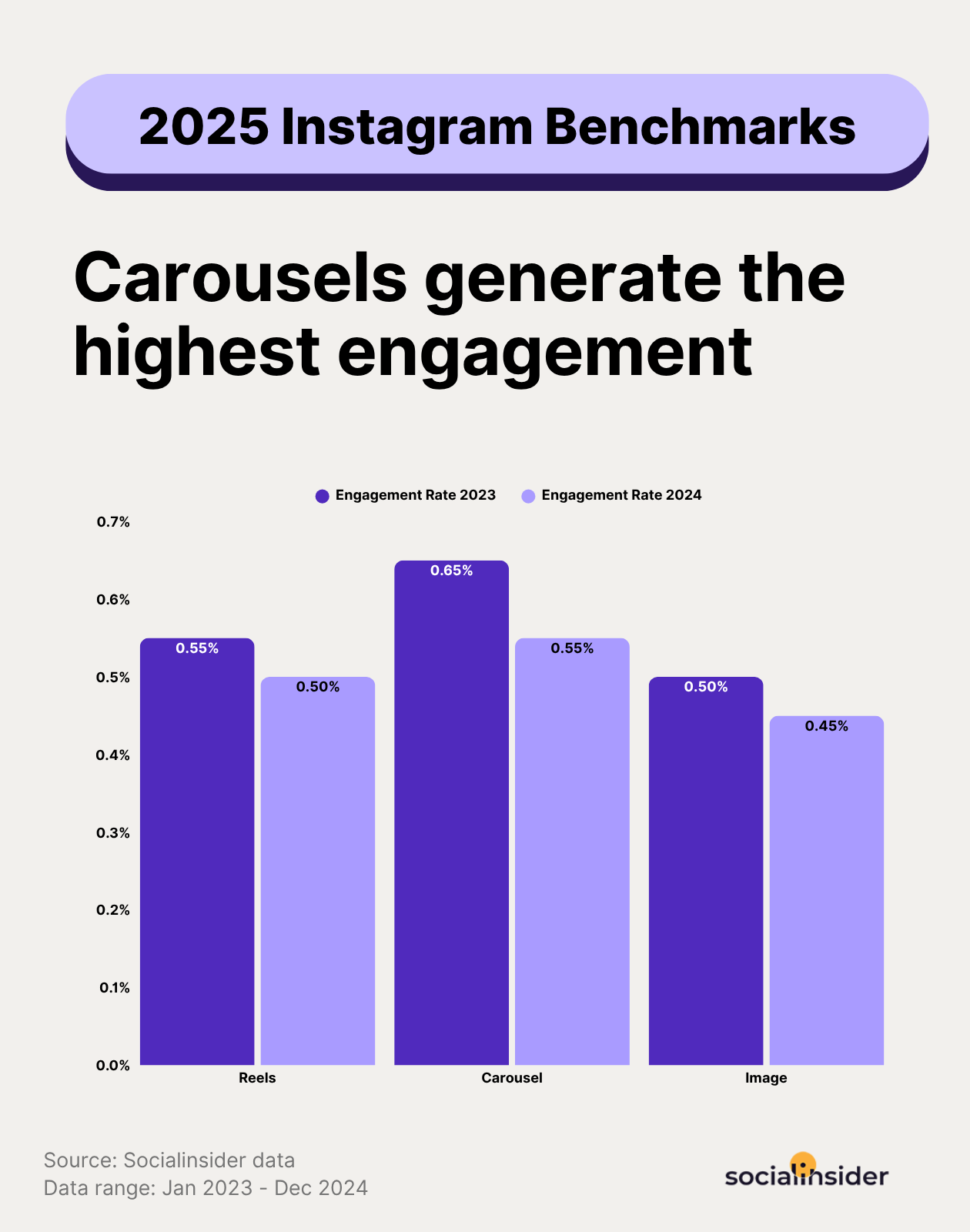
However, this doesn’t mean carousels will work for every business, so it’s best you test the same message across various content types to find the best-performing one for your brand.
- Long-form vs. short-form content
Both content lengths have unique advantages.
Longer posts may offer more in-depth insights, while shorter ones capture quick attention.
- User-generated content vs. branded content
User-generated content tends to feel more relatable and genuine, while branded content conveys a polished, professional image.
Audience targeting experiments
Now that you've tested different content formats, it's time to focus on who’s reacting to it.
Understanding which audience segments engage with your content helps ensure you're reaching the right people.
Here are a couple of key experiments to run:
- Demographic splits and preferences
Test different demographics such as age, gender, and location to identify which groups respond best to your content.
- Interest-based audience segments
Tailor your content to specific interest groups, like tech enthusiasts or fashion lovers, and see which social media target audience generates the most interaction.
Platform-by-platform experiment setup guide
Different platforms require different social media tactics.
What works on TikTok may flop on LinkedIn, and vice versa.
To get the most out of your social media experiments, you need to tailor your testing approach to each platform’s unique features, audience behavior, and content dynamics.
Here’s how to plan smart, strategic experiments for each major social network:
Facebook/Meta experiments
Best for: paid campaign testing, segmentation, and audience behavior insights
Meta's platform offers some of the most robust native A/B testing tools out there.
With Facebook experiments, you can test everything from creative assets and headlines to audience segments and delivery optimization methods, all within Meta Ads Manager.
Smart social media tactics for Meta:
- Test multiple ad creatives against the same audience to identify top-performing visuals.
- Use audience split testing to compare Lookalike vs. interest-based targeting.
- Run placement tests (e.g. Stories vs. Feed vs. Marketplace) to see where your budget works hardest.
Instagram experiment tactics
Best for: visual storytelling, influencer partnerships, content format testing.
Instagram thrives on strong visuals, aesthetics, and emotional resonance. It's also a prime space for influencer collaboration and UGC testing.
Effective social media tactics on Instagram:
- Influencer collaboration experiments: Test micro vs. macro influencers, paid vs. gifted collabs, or different CTA formats (e.g. swipe-up vs. comment-driven).
- Format performance: Try posting the same message as a Story, Reel, and static Feed post to see what drives more saves and shares.
- Caption testing: Does your audience engage more with long-form storytelling or short punchy captions?
Track more than just likes. Saves, shares, and profile visits are often stronger indicators of true engagement on this platform.
LinkedIn professional testing
Best for: B2B awareness, thought leadership, employee advocacy
LinkedIn is built for professional connection, but that doesn’t mean it lacks room for creativity.
In fact, the right mix of content can dramatically improve your reach and credibility.
High-impact social media tactics for LinkedIn:
- Employee advocacy experiments: Test the engagement difference between branded company posts and authentic, employee-led posts. Posts shared by individuals often drive more reach and interaction.
- Content format testing: According to LinkedIn Benchmarks Study, multi-image posts drive an average engagement rate of 6.60%, higher than any other post type. Even so, results may differ based on industry, so it’s best to test different formats to determine the best one for your brand.
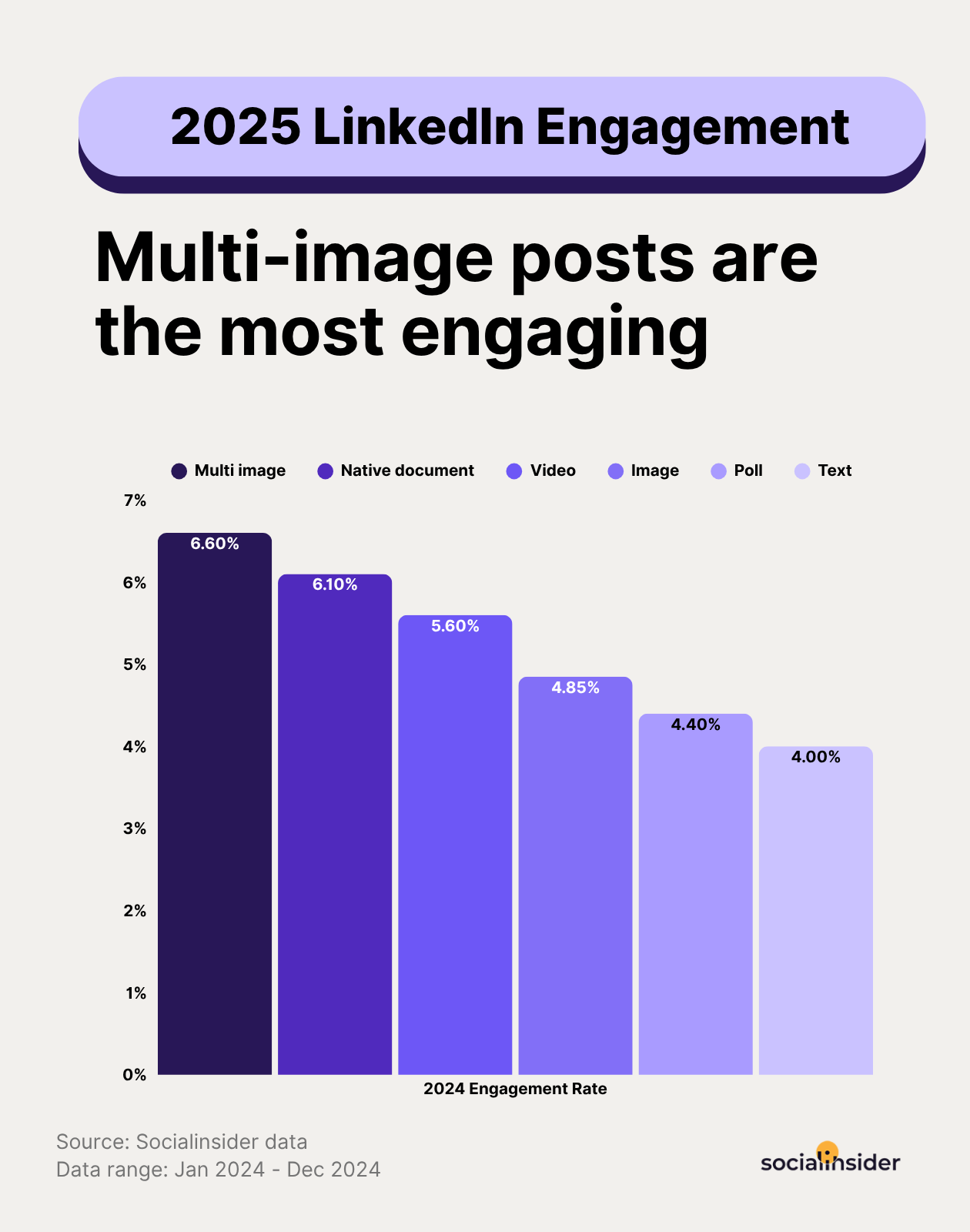
- Tone and message style: Compare thought leadership (opinionated, value-driven content) with classic company updates. Which earns more saves, shares, and conversations?
TikTok growth experiments
Best for: organic reach, community building, trend participation.
TikTok is driven by culture, not content calendars. That means agility and experimentation are non-negotiable. It’s the perfect platform for rapid-fire creative testing.
Smart TikTok social media tactics:
- Trending audio vs. original sound: Test the power of current trends vs. unique brand voice. Often, TikTok boosts videos using trending audio, even for business content.
- Hashtag challenge participation: Join trending challenges to boost discoverability, but test brand fit. Some trends may increase views while lowering relevance.
- Editing style tests: Try jump cuts, fast-paced editing, or storytelling with subtitles to see which style increases retention rate.
Twitter/X engagement tests
Best for: real-time interaction, thought snippets, news-jacking.
X is all about brevity, speed, and conversation. That makes it an ideal platform for testing micro-content tactics and seeing what sparks engagement fastest.
Effective Twitter/X social media tactics:
- Tweet length experiments: Compare short one-liners vs. longer tweet threads. Each drives different types of engagement.
- Format testing: Try text-only vs. text + image vs. native video. You’ll likely find visuals increase visibility but may affect click-throughs.
- Tone and style: Test professional vs. sarcastic vs. casual tones, especially when tapping into trending topics.
Mistakes to avoid when running social media experiments
Running experiments on social media is an exciting way to test ideas, validate assumptions, and fine-tune strategies, but even the best-laid plans can go wrong if you’re not careful.
Here’s a closer look at some critical pitfalls to watch out for:
- Insuficient sample sizes
One of the most common mistakes in social media experiments is testing ideas with a sample size that’s too small to draw valid conclusions.
Without a sufficient number of responses or interactions, your findings may be based on outliers or anomalies, rather than trends that are truly reflective of your audience’s behavior.
Remember: the bigger the sample, the more reliable your results will be.
- Ignoring external factors
External factors like shifting industry trends or actions taken by your competitors can significantly impact your social media experiment’s success.
When running tests, it’s crucial to track not just your own performance but the broader context in which your audience operates.
For instance, if competitors launch a high-profile campaign or there’s a noticeable shift in consumer sentiment within your industry, these changes could skew your results.
Social media is highly responsive to these external forces, and failing to account for them means your experiment could be influenced by factors you didn't anticipate, leading to misleading conclusions.
- Premature experiment termination
Patience is key.
It’s tempting to pull the plug on an experiment early, especially if initial results are disappointing.
However, prematurely ending an experiment before it has run its course can lead to incomplete or inaccurate conclusions.
Social experiments require time to gather enough data, and stopping too soon can prevent you from observing the full effects of your test.
Ideally, experiments should be planned with a clear end date that allows for sufficient data collection and analysis.
- Major holidays or events
When using social media to test an idea, timing is everything.
Major holidays or unusual events can throw off your results by creating atypical audience behavior.
Unless your experiment is directly related to a specific event—like running a holiday promotion or testing content around a cultural celebration—it’s best to avoid periods when people’s social media habits may be influenced by external factors.
During major holidays like Christmas, people may be distracted by family gatherings, shopping, or travel, and this could reduce the accuracy of your results.
Similarly, unexpected events, such as a viral news story or crisis, can create a temporary surge or decline in social media interaction, which could skew your experiment's outcomes.
Final thoughts
Knowing how to run an experiment on social media means you no longer have to rely on gut feelings or trends that change overnight. You can test smarter, move faster, and finally see what actually works—with data to back it up.
So go ahead.
Be bold. Test that wild caption. Launch that unexpected format. Split that audience into two.
Analyze your competitors in seconds
Track & analyze your competitors and get top social media metrics and more!
You might also like
Improve your social media strategy with Socialinsider!
Use in-depth data to measure your social accounts’ performance, analyze competitors, and gain insights to improve your strategy.



